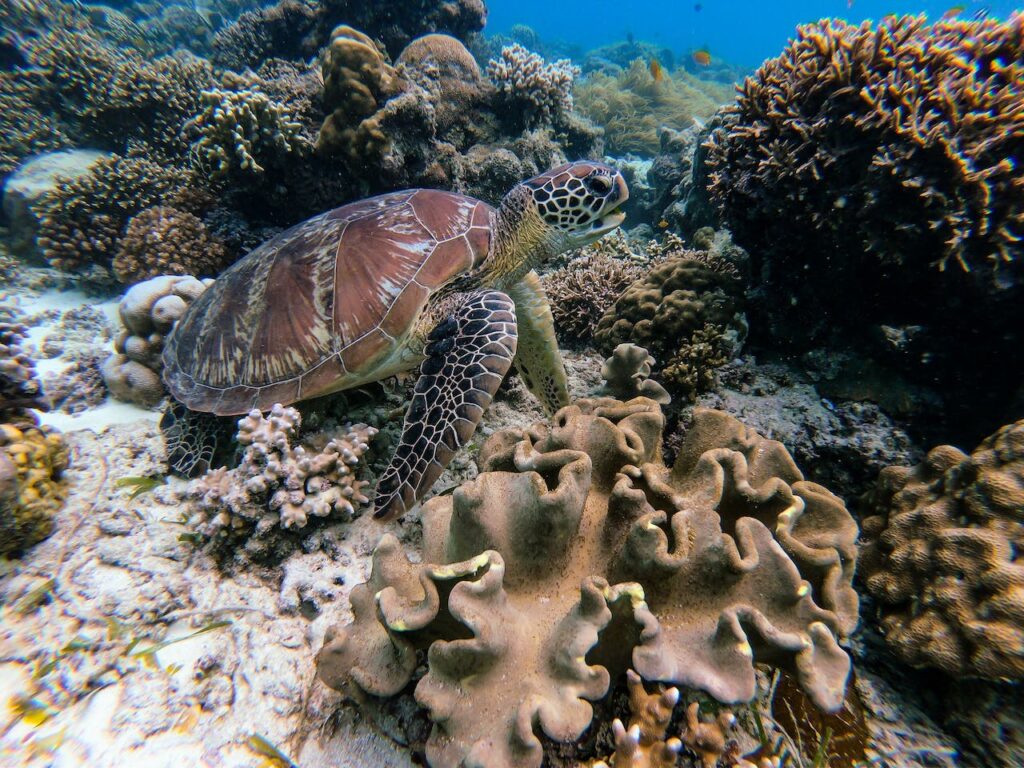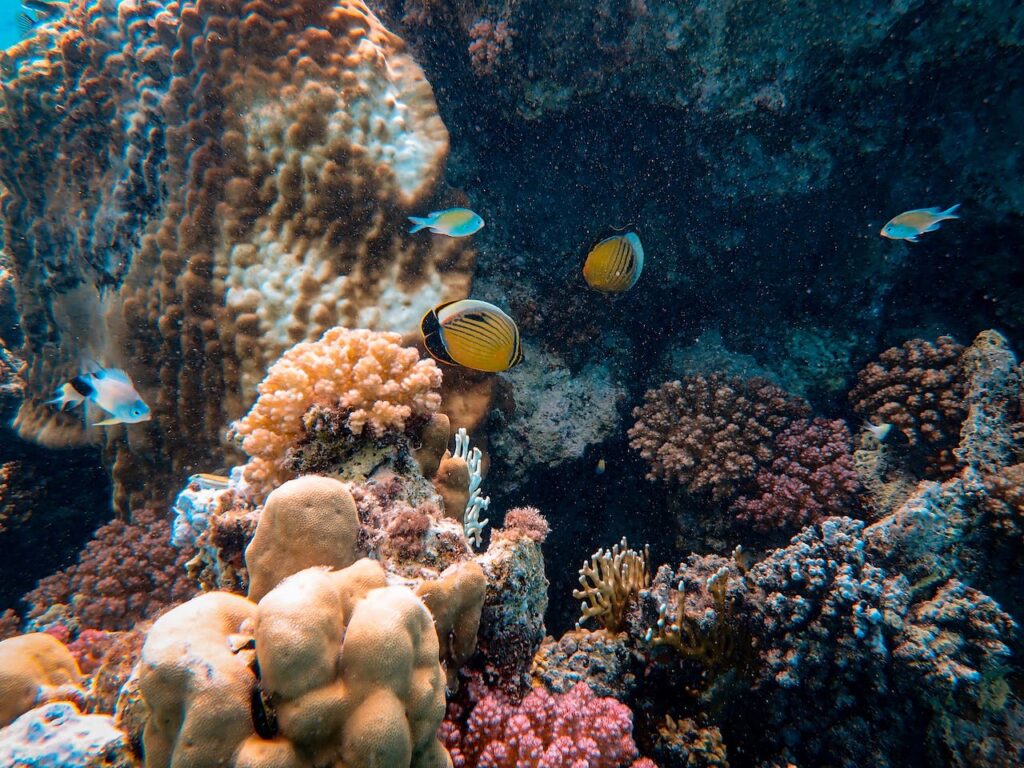Beneath the azure surface of the world’s oceans lies a mesmerizing and vibrant ecosystem that captivates the imagination – coral reefs. These underwater wonderlands are not just visually stunning but also crucial hubs of biodiversity, supporting a myriad of marine life. In this exploration of the colorful world of coral reefs, we will delve into their formation, the biodiversity they harbor, the threats they face, and the efforts being made to protect these vital ecosystems.
Page Contents
The Symphony of Colors Beneath the Waves
Coral reefs are the rainforests of the ocean, teeming with an array of colors that paint the underwater landscape. The vibrant hues of coral polyps, fish, and other marine creatures create a breathtaking tapestry that has fascinated scientists, explorers, and nature enthusiasts alike for centuries.
Coral Polyps: Architects of the Reef
At the heart of this kaleidoscope are coral polyps, tiny creatures that build the foundation of coral reefs. These invertebrates secrete calcium carbonate, creating intricate exoskeletons that form the stunning coral structures we admire. The symbiotic relationship between coral polyps and algae living within their tissues is what brings the reefs to life in a dazzling display of colors.
Read Also : The Immortal Jellyfish: Nature’s Eternal Enigma
The Rainbow of Marine Life
Coral reefs provide a home to an astonishing diversity of marine life. From the majestic parrotfish to the delicate seahorse, the colors and shapes of the inhabitants contribute to the vibrancy of these ecosystems. The camouflage tactics of various species, such as the leafy sea dragon blending seamlessly with its surroundings, add an extra layer of intrigue to the underwater spectacle.

Guardians of Biodiversity
Beyond their aesthetic appeal, coral reefs play a vital role in maintaining the health and balance of marine ecosystems. The biodiversity they support is unparalleled, and these underwater gardens serve as breeding grounds, shelters, and feeding areas for countless species.
The Nursery of the Sea
Coral reefs are often referred to as the “nursery of the sea” due to their role in providing a safe haven for the early stages of various marine species. The complex structure of the reef offers protection from predators, allowing juvenile fish to thrive. This abundance of life attracts larger predators, creating a delicate but crucial balance within the ecosystem.
Global Biodiversity Hotspots
Coral reefs are biodiversity hotspots, hosting about 25% of all marine species, despite covering only a small fraction of the ocean floor. The intricate relationships between different organisms create a web of interdependence, making coral reefs a cornerstone of the marine food chain. The loss of these ecosystems would have cascading effects, affecting not only marine life but also the millions of people who rely on the oceans for sustenance.
Threats to the Underwater Eden
While coral reefs are resilient, they face a myriad of threats that endanger their existence. Human activities, climate change, and natural phenomena pose significant challenges to these delicate ecosystems.
Climate Change and Coral Bleaching
One of the most pressing threats to coral reefs is climate change. Rising sea temperatures, a consequence of global warming, can trigger coral bleaching. During this process, the symbiotic relationship between coral polyps and algae breaks down, causing the corals to lose their vibrant colors and become susceptible to disease. Prolonged bleaching events can lead to mass coral die-offs, devastating entire reef ecosystems.
Overfishing and Destructive Practices
Overfishing and destructive fishing practices, such as blast fishing and cyanide fishing, contribute to the decline of coral reefs. The removal of key species disrupts the delicate balance within the ecosystem, leading to an overgrowth of algae and a decline in coral health. Additionally, the use of harmful fishing methods damages the physical structure of the reefs, further compromising their resilience.
Coastal Development and Pollution
As coastal populations grow, so does the pressure on coral reef ecosystems. Coastal development, pollution from runoff, and the discharge of chemicals into the ocean contribute to the degradation of water quality. Sedimentation, in particular, can smother coral reefs, preventing sunlight from reaching the coral polyps and hindering their ability to photosynthesize.

Conservation Efforts: A Beacon of Hope
Recognizing the critical importance of coral reefs, conservationists, scientists, and communities around the world are working tirelessly to protect and restore these fragile ecosystems.
Marine Protected Areas
The establishment of marine protected areas (MPAs) plays a crucial role in conserving coral reefs. These designated zones restrict human activities such as fishing and tourism to minimize the impact on the delicate ecosystems. MPAs provide a sanctuary for marine life to thrive, allowing damaged reefs to recover and preserving biodiversity for future generations.
Coral Restoration Initiatives
Coral restoration initiatives are emerging as a beacon of hope for ailing reefs. Scientists and conservationists are developing innovative techniques, such as coral farming and artificial reef structures, to aid in the recovery of damaged or degraded coral ecosystems. These efforts not only focus on restoring coral populations but also on addressing the root causes of reef decline, such as climate change and overfishing.
Public Awareness and Education
Public awareness and education are pivotal in the conservation of coral reefs. Efforts to inform communities, tourists, and policymakers about the importance of these ecosystems and the actions needed to protect them can drive positive change. Sustainable tourism practices, responsible fishing, and reducing carbon emissions are among the key strategies advocated by conservationists.
Read Also : Unlocking the Wonders of the Deep: The Marvellous Echolocation Abilities of Dolphins
Conclusion
The colorful world of coral reefs is a testament to the breathtaking beauty and biodiversity that the ocean conceals beneath its surface. From the delicate dance of coral polyps to the vibrant array of marine life, coral reefs are essential to the health of our planet. However, they face unprecedented threats from human activities and climate change.
As stewards of this planet, it is our responsibility to take action and protect these invaluable ecosystems. Through conservation efforts, sustainable practices, and global collaboration, we can ensure that the colorful world of coral reefs continues to thrive for generations to come. The fate of these underwater havens is intertwined with our own, reminding us that the health of the oceans reflects the well-being of the entire planet.


